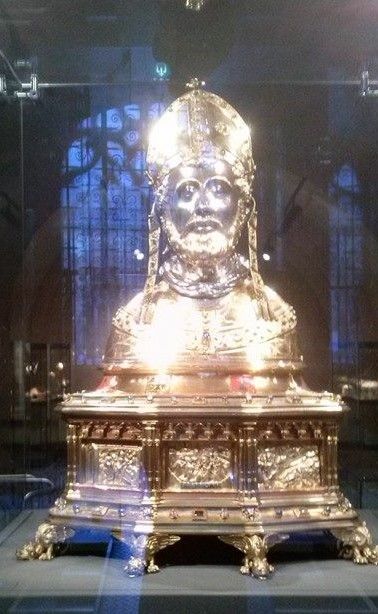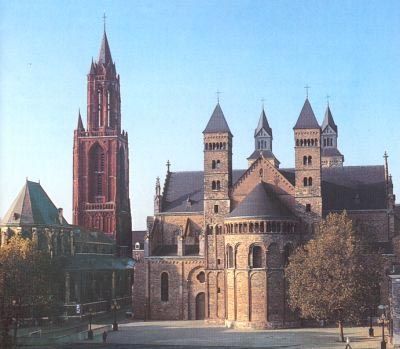Saint Servatius of Maastricht

Feast Day: May 13
Usually referred to as Sint-Servaas or Sint-Servatius
There is no doubt that Servatius existed. Saint Servatius was the 10th bishop of Tongeren in the 4th century. Towards the end of his life he fled to Maastricht.
Because he transferred the episcopal see to Maastricht, he is known as the first bishop of that city.
He died in Maastricht in the year 384 AD.
According to tradition, his grave is located in the St. Servatius Crypt in the St. Servatius Basilica in Maastricht named after him. Saint Servatius is the patron saint of Maastricht.
The 'Bust of Saint Servatius' is a so-called 'talking reliquary' in the form of a bust. A large part of Saint Servatius's skull has been preserved in the head since the year 1403.
His place of death developed into an important place of pilgrimage with a beautiful basilica.
For centuries, his body has been resting peacefully in the Maastricht earth, and he is slowly performing some routine-looking miracles. He heals the lame, the mad, and the lepers.
The oldest reports of pilgrimage to the grave of Saint Servatius date from the sixth century. In the late Middle Ages, pilgrims from Italy to Scandinavia, from England to Hungary, traveled to Maastricht to visit the grave of the holy bishop. The many visitors also included Charlemagne, Holy Emperor Henry II and Saint Bernard of Clairvaux. The grave can now be visited daily in combination with a visit to the Treasury and Basilica.
He was canonized at the end of the 6th century by one of his successors, Bishop Monulfus.
